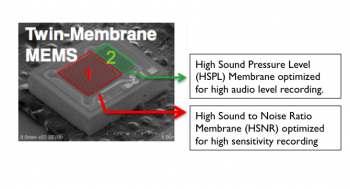
HTC One’s dual-membrane microphones promise to record superior audio
No one’s expecting their smartphone microphones to record studio quality audio, but you would still want it to handle the task without completely destroying your recording. After all, there are some things you can’t record twice and you would hate for precious memories to be tainted by audio that you can’t make out. HTC decided to tackle the problem head-on with the HTC One, and they did it by having two dual-membrane microphones on board.
A dual-membrane setup allows a microphone to properly adjust audio gain on recordings by being able to handle high pressure audio (IE, audio that is too loud) and sound-to-noise ratio levels, or the sensitivity of the microphone, at the same time. You’ve likely run into both situations in the various videos recorded in your life time.
For instance, if you’re recording a busy street the microphone might struggle to pick up clear audio as the roars from cars and trucks on the road prove to cause too much pressure on audio levels. At the same time, if you’re trying to record a noise from afar you might hear a hissing noise as the microphone tries its hardest to pick up everything it can (this particular situation can be likened to light sensitivity, or ISO, on a camera).
Audio engineers we are not, but we should know soon enough if these particular changes really do solve (or help alleviate) the problem that has plagued audio recording on mobile phones for years. Read more about what’s going on inside the audio recording chips of HTC’s latest flagship at the OEM’s blog.